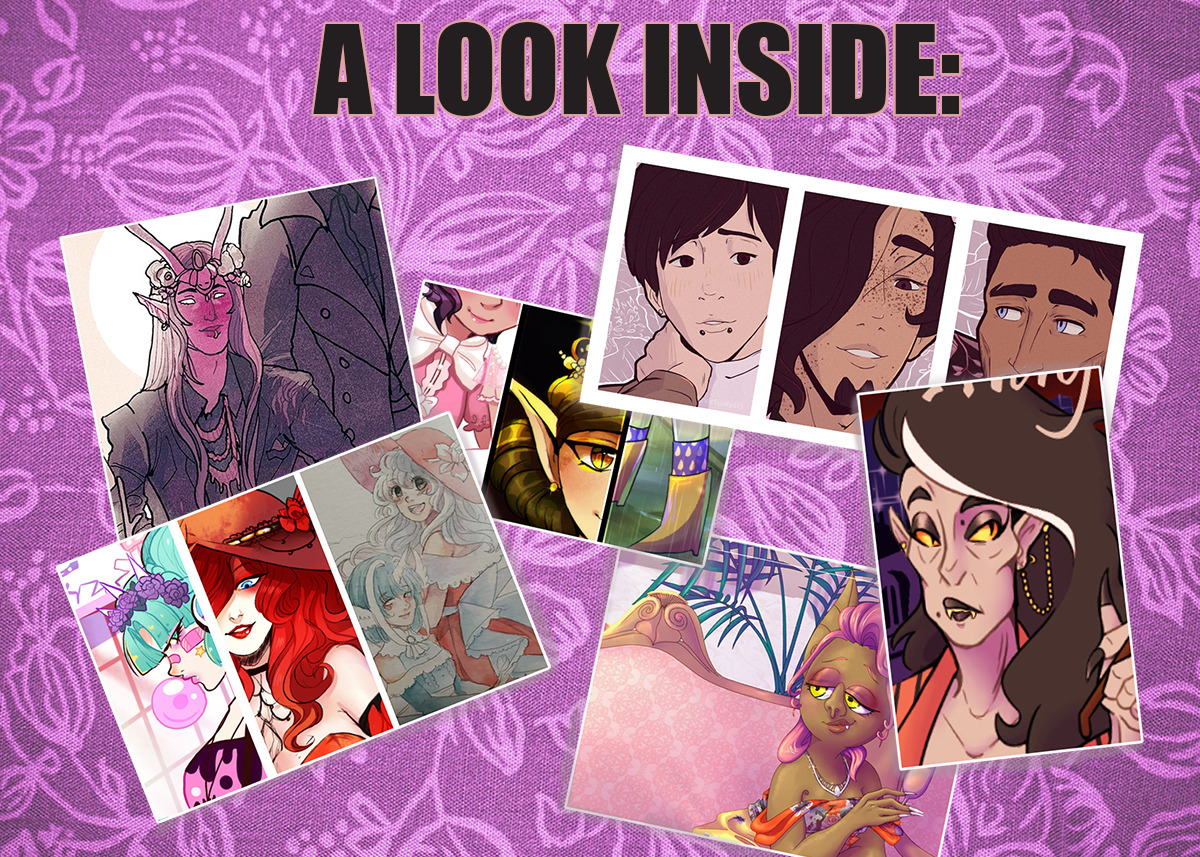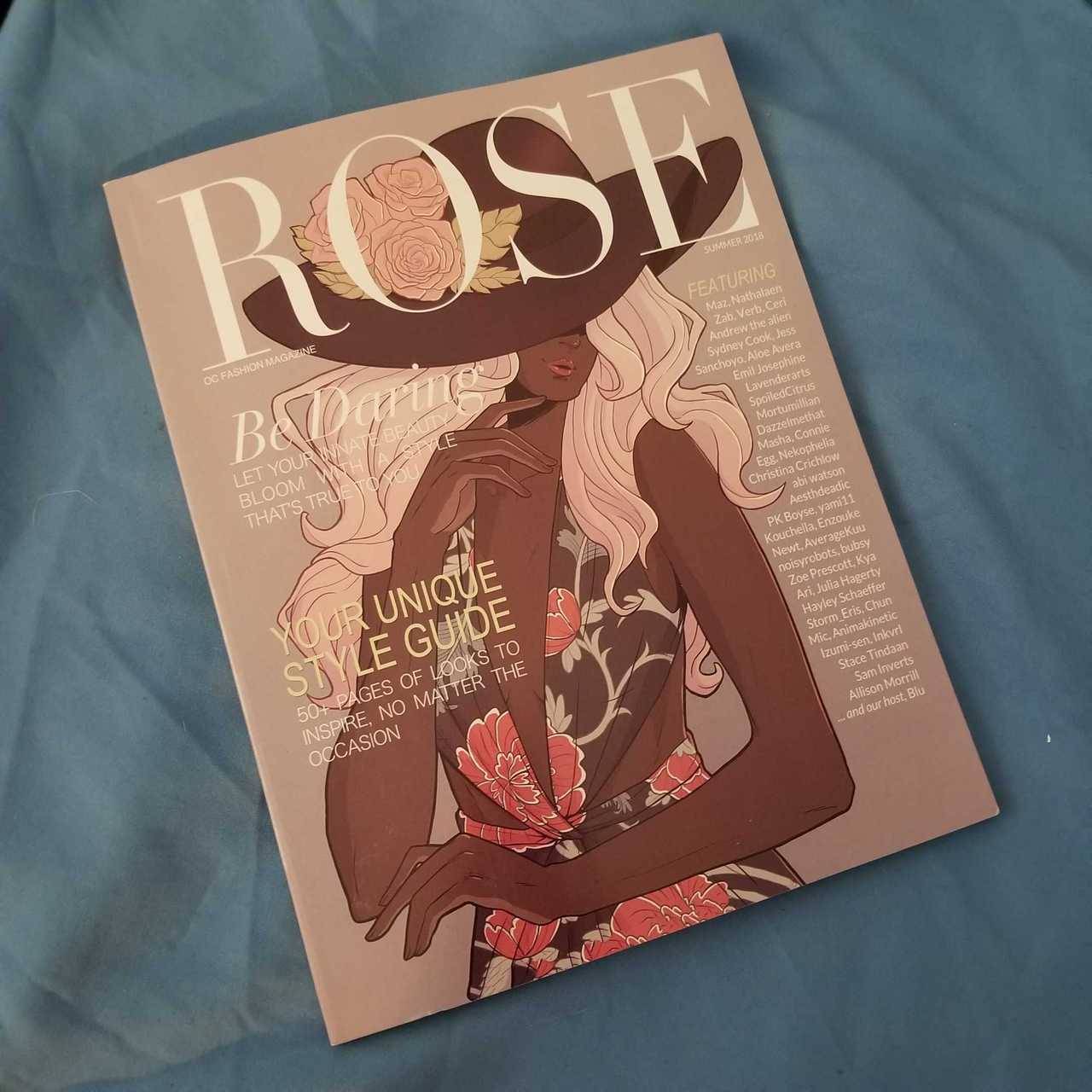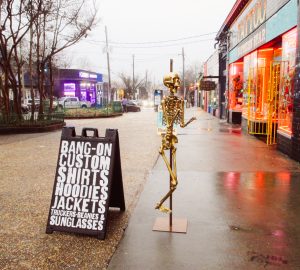What’s it like to run a zine? An interview with Akira Brown
Third-year sequential art major Akira Brown recently organized an original art zine. The original character (OC) Rose Zine has nearly 50 contributing artists, pulling together creators from all over the world to create a unique collection of artwork focused around fashion and original characters. The Connector got a chance to speak with her about how she pulled it off and what advice she has for other potential zine organizers.

The Connector: The OC Rose Zine is the second zine you’ve run, correct? Can you tell me more about your first project?
Brown: This is my second zine, yes! My first zine was called The Power of Nakama: A One Piece Fanzine. It was a much smaller project of 11 artists (including myself) drawing their favorite “One Piece” friendships. It was a much smaller scale than the Rose.
The Connector: What did you learn from your first zine experience that you put into the OC Rose Zine?
Brown: I learned how to better organize pretty much everything. Some of it was rather basic, but it makes a big difference, like creating an email group so I wouldn’t have to type out every email address for announcements. I also learned how to better budget for the zine and found a lot of good places that could print books for cheap but good quality.
The first zine also taught me how to keep up with a group of people I couldn’t physically see all the time. These artists were all over the world, so keeping them updated constantly (without being overbearing) was important. There’s probably other small things I learned here and there that were technical (like organizing art pages into a book) but those were the ones that came to mind first.
The Connector: What inspired you to create the OC Rose Zine?
Brown: Zines are pretty popular in the art community and more often than not, they are geared towards fandoms. I enjoy a lot of different shows and games, but for me to want to participate in one I would have to really be invested in that specific fandom or theme to really want to be in it. And the ones that I found interesting, I’d always find out about it after the applications were closed which of course was always a bummer. Then I realized the one theme I had never seen before — original characters. A lot of artists have their own worlds and characters created that get overshadowed by the fanart they create, including myself. So, I wanted to spotlight them! The fashion part came from the idea of keeping things somewhat uniformed because the OCs were so vastly different. And fashion is usually in magazines so, in short, I always seem to miss out on zines that I really want to join, and I think OCs are neat.
The Connector: How did you select the artists for your zine?
Brown: I really wanted the art styles to be as different as they came because I think it shows the personalities of the artist and characters. So, I first put, I guess you can call it a feeler, out on Twitter, making a poll to see if people would be interested in it. At first it was a few friends who were interested and then they retweeted and soon I had over 50 people interested on Twitter alone. So, I put out applications on Twitter and Tumblr and the interest exploded. I had to sift through about 260 applications. How I chose the actual artists were based on, of course, technical aspects, but then I focused a little more on how interested in their own OCs they were. A lot of the portfolios I got were Tumblr pages so scrolling through and seeing if they drew their OCs a lot, or at least talked about them, was a good look. But honestly, it was just whatever caught my eye. There were a lot of good ones and I wish I could have let everyone join but that would have been way too many people.
The Connector: What’s the most difficult part about organizing a zine with so many contributors?
Brown: The most difficult part was keeping up with them all. I started with 50 contributors and then ended with 45 (including myself). Some people don’t check their emails, or respond when I ask so it’s a little difficult to keep up. I combatted that with making excel sheets that they had to fill out. It helped me make sure that everyone was still on board despite not responding to emails. Also, making a Discord for it was super helpful (I didn’t do that with the first zine) because it let people casually chat and make new friends, which was nice. The second hardest thing was shipping. I had to learn how to write addresses for different countries because they’re formatted differently.
The Connector: What was your favorite part about this experience?
Brown: My favorite part about this whole thing is everyone’s reactions when they saw the books and just their general excitement about it. It’s really nice to see something you’ve created be put in an actual book and being able to hold it in your own hands. It gives me a sense of accomplishment completing projects like this, especially when people are happy about it.

The Connector: Are you planning more zines in the future?
Brown: I am thinking about creating a second issue of the Rose in the fall. There will probably be a more fashion focused theme, but it will still be OCs in some type of fashion. That’s for sure. I’m still planning that out. I am however co-hosting a zine or two with a friend of mine.
The Connector: What’s some advice you could give to other SCAD students thinking of making their own art zine?
Brown: Oh boy lets see … First and most important, you have to be super invested in the idea. You don’t want to plan like, a mermaid themed zine, for example, and then halfway through get bored of it. But here’s some advice in a coherent order.
First, make a timeline of events from applications to preordering to give the applicants an idea of what they have to plan for. And when you do, check to make sure your own schedule isn’t conflicting in anyway. Then when you make that timeline, make a personal timeline for yourself. It’s like the first timeline but give yourself time for application reviews and sending out emails.
Second, plan your budget. You should give your artists a free copy of the book because they helped make it. Books can get expensive so plan for that. Asking artists to pay for shipping when you plan to send them off can help.
Third, you have to be patient. You might not get a lot of interest the first few days but keep sharing on all of your social media, ask your friends to share it too. You’re bound to get something.
Fourth, when you have your artists together, excel sheets are your friend. They keep things organized from how many people you have, their emails and how many pages they want to do. You have to be organized.
Fifth, be open to suggestions from your artists. Some of them have been participating in zines for a long time so their advice can be helpful.
Sixth, communication is important. Update your artists so they know what’s going on, whether you’re just checking in on WIPs or telling them you’re ordering the books. They have to know what’s going on. It may feel overbearing, but nine times out of 10, they are happy to know what’s going on.
Seventh, you don’t have to host a zine by yourself. Get a trusted friend to help you organize if you want. I honestly don’t know why I didn’t do that, I should have.
And last but not least, the cheesiest advice is to have fun. Everything is a lot easier when you’re having fun. Oh and make friends with the artists because it’s a great opportunity to network for the future plus, you have friends along the way so bonus. I think that’s enough advice to get you started. You can also easily ask hosts like myself about their process and how they do things as well. Okay, yeah now I think that’s a good amount of info to help.
The OC Rose Zine is open for pre-orders until June 30, and features SCAD students Allison Morrill, Connie Hernandez, Jasely Martinez, Julia Hagerty and Masha Zhdanova as contributors.






















